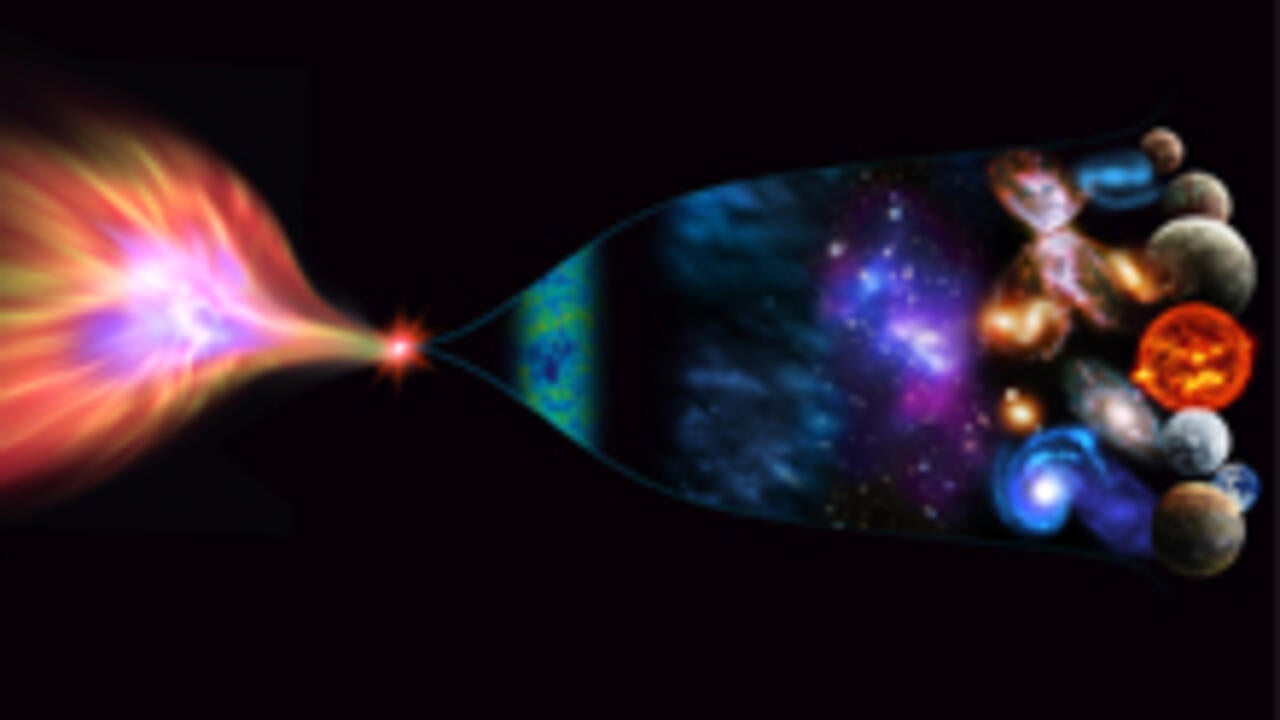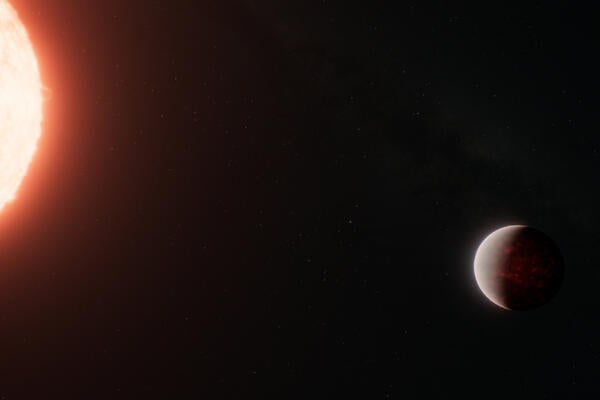
Waterloo astrophysicists propose new twist on Big Bang in Scientific American
Our universe may have emerged from a black hole in a four-dimensional universe, say University of Waterloo researchers

Our universe may have emerged from a black hole in a four-dimensional universe, say University of Waterloo researchers
By Colin Hunter Perimeter InstituteThe Big Bang poses a big question: if it was indeed the cataclysm that blasted our universe into existence 13.7 billion years ago, what sparked it?
 Three University of Waterloo astrophysicists have a new idea about what might have come before the Big Bang. It’s a bit perplexing, but it’s grounded in sound mathematics, testable, and enticing enough to earn the cover story The Black Hole at the Beginning of Time in the popular magazine, Scientific American.
Three University of Waterloo astrophysicists have a new idea about what might have come before the Big Bang. It’s a bit perplexing, but it’s grounded in sound mathematics, testable, and enticing enough to earn the cover story The Black Hole at the Beginning of Time in the popular magazine, Scientific American.
Scientific American features in-depth articles explaining the latest scientific findings to science enthusiasts, usually written by scientists themselves. Famous contributors include Albert Einstein, Linus Pauling and J. Robert Oppenheimer.
In this month’s issue, Assistant Professor Niayesh Afshordi, Professor Robert Mann, and PhD candidate Razieh Pourhasan from Waterloo’s Department of Physics and Astronomy argue that what we perceive as the Big Bang could be the three-dimensional “mirage” of a collapsing star in a universe profoundly different than our own.
Conventional understanding holds that the Big Bang began with a singularity, an unfathomably dense phenomenon of spacetime where the standard laws of physics break down. Singularities are bizarre, and our understanding of them is limited.
“For all physicists know, dragons could have come flying out of the singularity,” Afshordi, also an Associate Faculty member with the Perimeter Institute, said in an interview with Nature.
So the problem, as the authors see it, is that the Big Bang hypothesis has our relatively uniform and predictable universe arising from the physics-destroying insanity of a singularity. It seems unlikely.
So perhaps something else happened. Perhaps our universe was never singular in the first place.

Graphic by Gabriela Secara, Perimeter Institute for Theoretical Physics.
In the authors’ scenario, our universe emerged when a star in a four-dimensional universe collapsed into a black hole. In our three-dimensional universe, black holes have two-dimensional event horizons: that is, they are surrounded by a two-dimensional boundary that marks the “point of no return,” where light, matter and energy can no longer escape from immense gravitational forces. In the case of a four-dimensional universe, a black hole would have a three-dimensional event horizon.
In other words, our universe was never inside the singularity; rather, it came into being outside an event horizon protected from the singularity. It originated as – and remains – just one feature in the imploded wreck of a four-dimensional star.
The researchers emphasize that this idea, though it may sound absurd, is grounded firmly in the mathematics describing space and time. Specifically they’ve used the tools of holography to “turn the big bang into a cosmic mirage.” Along the way, their model appears to address long-standing cosmological puzzles, and – crucially – produce testable predictions.
Of course, our intuition tends to recoil at the idea that everything and everyone we know have emerged from the event horizon of a four-dimensional black hole. We have no concept of what a four-dimensional universe might look like. We don’t know how a four-dimensional “parent” universe itself came to be. But our fallible human intuitions, the researchers argue, evolved in a three-dimensional world that may only reveal shadows of reality.
They draw a parallel to Plato’s allegory of the cave, in which prisoners spend their lives seeing only the flickering shadows cast by a fire on a cavern wall. “Their shackles have prevented them from perceiving the true world, a realm with one additional dimension,” they write.
Robert Mann is also an Affiliate member at Perimeter Institute and Razieh Pourhasan is cross enrolled in Perimeter Institute’s PhD program.
The original peer-reviewed article entitled, Out of the White Hole: A Holographic Origin for the Big Bang appeared in the April issue of the Journal of Cosmology and Astroparticle Physics. This work was funded by the Natural Science and Engineering Research Council of Canada (NSERC), the University of Waterloo and by Perimeter Institute for Theoretical Physics.

Read more
Here are the people and events behind some of this year’s most compelling Waterloo stories

Read more
Discovery of a thick atmosphere on a lava world reshapes our understanding of rocky exoplanets

Dr. Brian Dixon, professor of biology at the University of Waterloo says there is a link between cold weather and getting sick. (University of Waterloo)
Read more
Waterloo researcher shares why we get sick when the mercury dips
The University of Waterloo acknowledges that much of our work takes place on the traditional territory of the Neutral, Anishinaabeg, and Haudenosaunee peoples. Our main campus is situated on the Haldimand Tract, the land granted to the Six Nations that includes six miles on each side of the Grand River. Our active work toward reconciliation takes place across our campuses through research, learning, teaching, and community building, and is co-ordinated within the Office of Indigenous Relations.